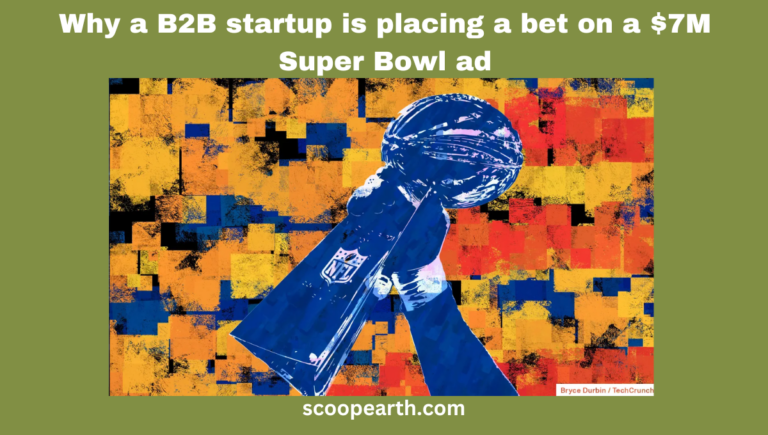Friday, 8 February 2024, Bengaluru, India
Thus, Papaya Global hopes. The 30-second commercial will air on Sunday for the late-stage global workforce payment business. The advertisement highlights the company’s software to help other enterprises stay compliant when managing payroll for international teams. The ad, set in an office, is boring compared to Super Bowl mainstays like Budweiser and McDonald’s, which draw attention yearly with humor, celebrities, and excellent production values.

(Image Source: Techcrunch.com)
Being a B2B software provider, Papaya’s lack of a showy advertisement is understandable. While B2B businesses often employ conventional consumer-focused marketing strategies, purchasing advertisements for a New York City subway or a San Francisco freeway billboard differs significantly from advertising during the Super Bowl. In the current year, a 30-second spot during the Super Bowl ad commanded a price tag of $7 million.
Despite the substantial audience of the Super Bowl, Columbia Business School professor Bernd Schmitt, an expert in branding and advertising, argues that many B2B companies require additional room to showcase their offerings successfully.
Jessica Malamud, vice president of marketing and communications at Papaya, stated that the company’s decision to run a Super Bowl commercial was driven mainly by the desire to stand out. Malamud claimed that competition in the employee payments market has increased since the company’s founding. Startups like Remote and Oyster HR have gained traction. Furthermore, in a market like payroll providers, brand awareness is crucial.
Malamud declared, “We are in an environment; this is no longer a green field.” “Our company had tremendous development and success, yet it was entirely environmentally friendly. We need to fight harder now.
Although there will be many new people who can learn about Papaya thanks to the exposure, most people who watch the Super Bowl advertisement don’t need to know about it and won’t get anything from it. However, Schmitt said that the ad might yield a higher return on investment for the company than one from a B2B company with a more focused customer base because Papaya works with businesses of all sizes and sectors.
Schmitt remarked, “If you have the money to do it, it doesn’t seem entirely crazy.” It is a ridiculous notion for a B2B company where some company sells to major companies. It might be acceptable if your target is considerably more diverse, relatively small, or a longtail of all these B2B enterprises.
The effectiveness of the advertising effort will take a lot of work to monitor. McDonald’s can track burger sales before and after the game if it advertises a burger during the match. It’s relatively clear-cut. That differs from how B2B sales cycles operate, making ROI more challenging to measure. It could be difficult to determine whether the advertisement influenced sales if a company is interested in Papaya because of the ad but is yet bound for months or years to a contract with another payroll provider.
Papaya’s head of communications, Hila Perl, stated that the company is not considering the advertisement as a direct lead-generation tactic.
Perl stated, “It’s not so we can sell more.” “Yes, of course, we would like to see an obvious ROI, but
It’s rare for B2B startups to have attempted this marketing strategy. However, a distinction might be seen between Squarespace’s approach and Papaya’s. Squarespace, which assists small businesses in creating websites, is no longer a startup and has a more pungent B2B taste than pure B2B. However, during its early years, the company broadcast Super Bowl advertisements for many years.
Squarespace’s chief creative officer, David Lee, told TechCrunch that the business ran such advertisements because it thought it had a terrific product that no one knew. Squarespace had money to spend and was already profitable. Although Lee acknowledged that there are better courses of action for some firms, it helped increase sales and brand awareness.
Suppose Papaya runs a commercial during the Super Bowl the following year. In that case, we’ll determine whether the firm thought the ad was a success overall, even though tracking the direct return on investment could be difficult.
(Information Source: Techcrunch.com)
Hi, I am Subhranil Ghosh. I enjoy expressing my feelings and thoughts through writing, particularly on trending topics and startup-related articles. My passion for these subjects allows me to connect with others and share valuable insights.
